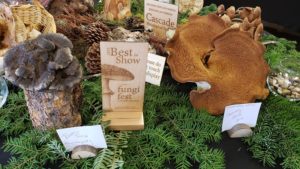Introducing the World’s Deadliest Mushrooms
While unfamiliar to most by name, this mushroom is one of the most recognized by sight, with its typically red cap with white spots. Introducing Amanita muscaria, a brightly colored beauty with a dark secret. They are poisonous and hallucinogenic.
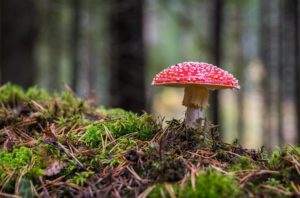
The common name, the Fly Agaric, comes from its use in some regions as a fly trap. Small pieces of the mushroom are placed in milk to attract flies, which become intoxicated from the poison and therefore lose their ability to fly.
These mushrooms are quite common throughout the northern hemisphere and can grow up to a foot tall with caps the size of dinner plates. They and many of their close relatives are among the deadliest fungi in the world.
The Vikings used Amanitas to suppress their fears, making them ruthless invaders.

Close relatives of the Fly Agaric; the aptly named Death Caps and Destroying Angels, are even more deadly. If ingested, effects may include vomiting, delirium, convulsions, diarrhea, liver and kidney failure, and without proper treatment, rapid organ failure, coma, and death.

The Fly Agaric, Amanita muscaria. Illustration by Christine Elder

If you own a dog, beware! Each year, many dogs end up at the veterinarian, often with dire consequences after eating these types of mushrooms found while hiking with their owners in a forest.
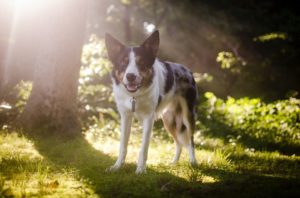
Protect your pup from eating poisonous mushrooms!
While some mushrooms are easy to identify, many are not. Sometimes the only physically observable difference between an edible and deadly mushroom is the color of the microscopic reproductive spores. It’s fun and easy to create a mushroom spore print to help identify the next mushroom you come across.
Download my one-page GUIDE on making a mushroom spore print.
A Mushroom By Any Other Name
What do Witch’s Butter, Blood Boletes, Inky Caps, and Jack O’ Lanterns have to do with mushrooms?
They are all spooky sounding, but real, names of common forest fungi. These creepy denizens of dank, dark redwood and pine forests were familiar to me growing up in California and awakened an early fascination with all things fungi.
Add the Dog Vomit Slime Mold, Bleeding Milk Cap and Fluted Black Elfin Saddle to the mix, and you might understand how any child would be intrigued by these fancifully named organisms that play a vital role in decomposing the plant matter in forests worldwide!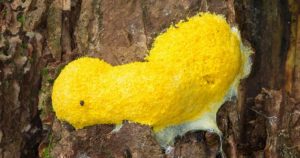
Dog Vomit Slime Mold
While not deadly like the Amanita described above, with names like these, one wouldn’t be inclined to eat them!
LEARN MORE ABOUT FUNGI
Read a book
The quintessential book for identifying North American mushrooms is All That the Rain Promises and More, by David Aurora.
Join a mushroom lovers’ club
Autumn is the best time for mushroom hunting, and you can join a local mycological society for organized walks, classes where you can learn how to collect, identify your local species and how to cook the edible ones.
When I lived on the California coast, I belonged to an excellent one, The Fungus Federation of Santa Cruz, and their website is a great resource for mushroom lovers, as is the North American Mycological Association.
Our local club hosts frequent walks and each season I am lucky to bring home some delicious boletes, chanterelles, and morels to add to my pasta, pizza, and quiche recipes. Yum!
Learn how to make a mushroom spore print
Making spore prints is a really fun activity to do with kids and some prints are even pretty enough to frame! And knowing the color of a mushroom’s spores is sometimes the only way to confidently identify a species.
Learn to Make a Mushroom Spore Print HERE.

LEARN MORE ABOUT MUSHROOMS AND THEIR IDENTIFICATION


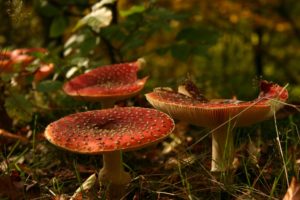
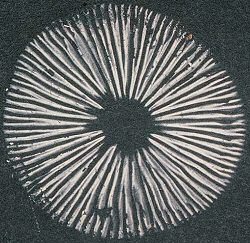
![By Franco Folini from San Francisco, USA (Witch's Butter (Tremella mesenterica)) [CC BY-SA 2.0 (http://creativecommons.org/licenses/by-sa/2.0)], via Wikimedia Commons witchs_butter_tremella_mesenterica_2140081850](https://christineelder.com/wp-content/uploads/2015/10/Witchs_Butter_Tremella_mesenterica_2140081850-225x300.jpg)


